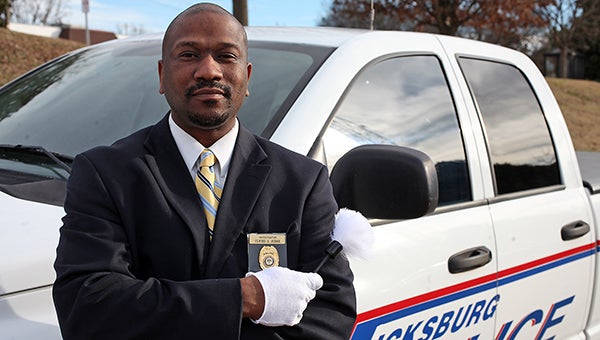CSI not what it appears on television
Published 9:39 am Friday, October 2, 2015

- CSI: Curtis Judge is a crime scene investigator with the Vicksburg Police Department.
Since the sleeper hit “CSI: Crime Scene Investigation” hit the airwaves in 2000, there’s been an increased awareness in forensic evidence — DNA, fibers, fingerprints and blood spatter.
Too bad for the fans of the crime drama that ended with a two-hour finale Sunday that things are far more complicated in real life than they are in the “CSI” universe.
“Don’t believe everything you see on TV. Even though its good, it’s fun and it’s entertaining, it leads people to believe there are things that can be done that really can’t be done,” Vicksburg Crime Scene Investigator Curtis Judge told Port City Kiwanis Thursday.
On the once popular show and its numerous spinoffs and copycats, crimes fit neatly into 60 minutes. Test results are instantaneous, and criminals always leave evidence.
In reality, test results can take weeks or months to come back.
“It doesn’t happen right away. It doesn’t even happen overnight,” Judge said.
One of the biggest misconceptions is about fingerprints. On television, images of fingerprints whiz by at a thousand miles an hour and match up with a seemingly endless database of every known bad guy or gal in the world.
“They have their own labs on TV, we don’t have our own lab,” Judge said.
At VPD, fingerprints are scanned in to a database but it takes much longer to compare prints. Only state and federal officials have access to the national database and only the prints of known criminals are on file.
Also in the “CSI” universe, useable fingerprints are almost everywhere.
“Take your time and get them because not all surfaces you pull prints from are not the same. People believe you can get fingerprints from anything. Don’t believe CSI,” Judge said. “You can’t get fingerprints from everything.”
The advance in technology on fingerprints and other forensic evidence has been useful in the courtroom, said former four-term District Attorney Gil Martin.
“It’s much different now,” said Martin, a charter member of the Port City club. “You had to sort through hundreds of fingerprints by hand and try to match them up with ones found at the crime scene.”
When Martin was first elected as District Attorney in the early 1990s, VPD would send a single detective to investigative a major crime. They would be in charge of securing the scene, gathering physical evidence, questioning witnesses and searching for a suspect.
“It was an impossible task,” Martin said.
Adding crime scene investigators like Curtis has been a major boon for the criminal justice system, Martin said.
“Juries want to see physical evidence in a crime,” he said.





